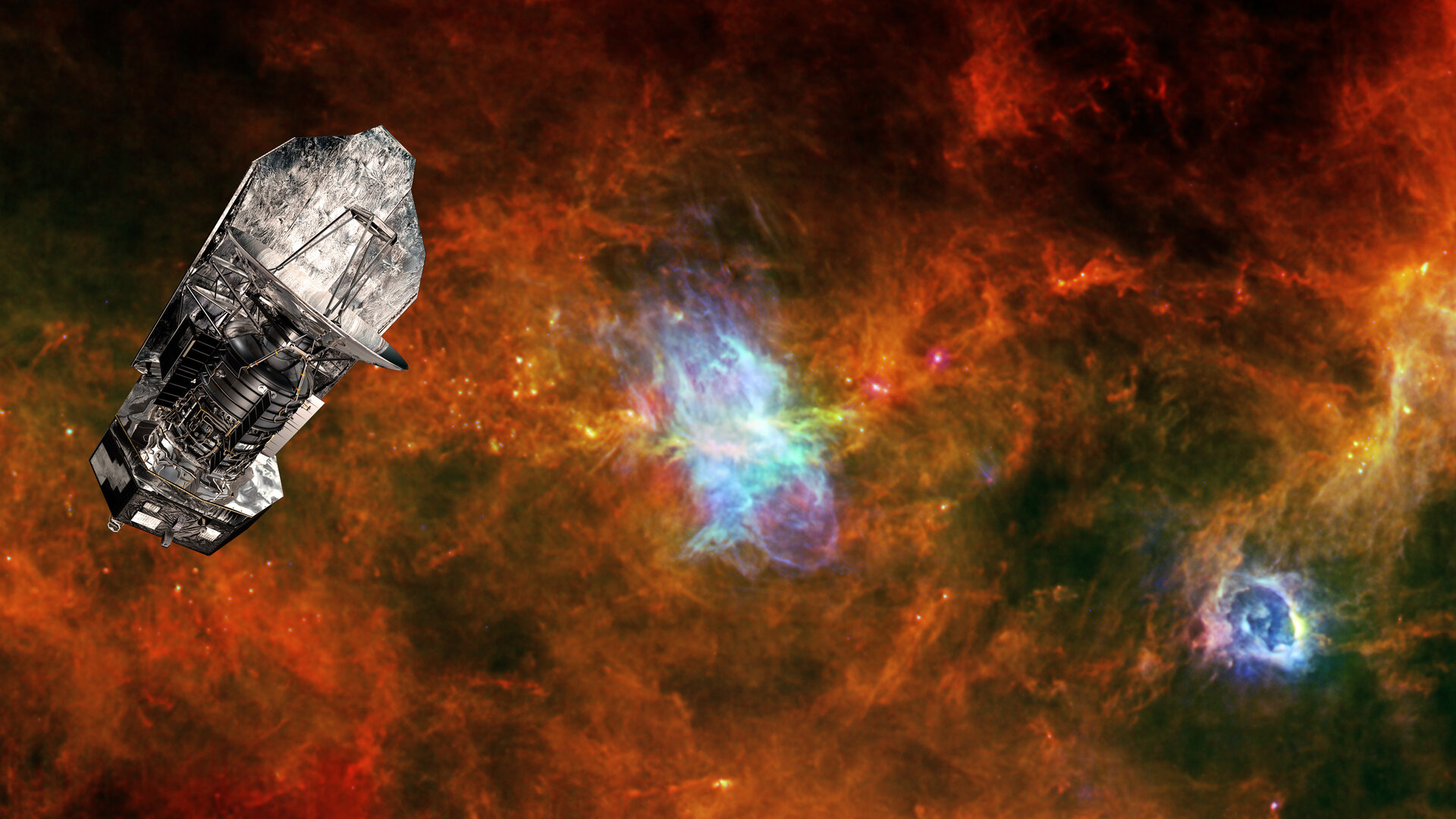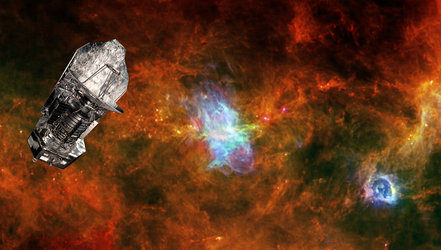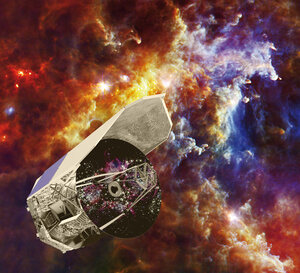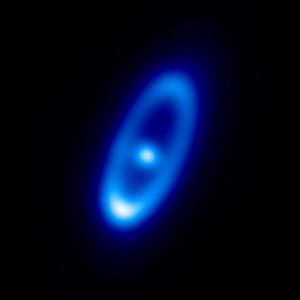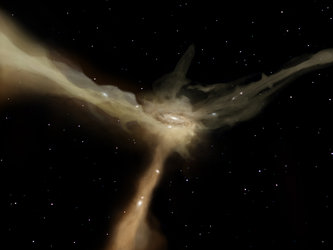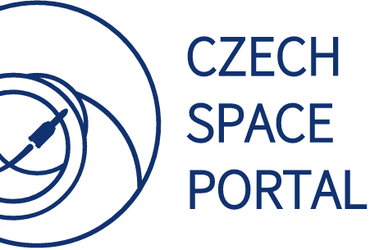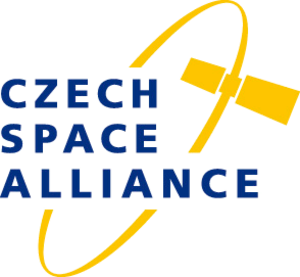Observatoř Herschel zavřela své oči, kterými pozorovala vesmír
Kosmická observatoř ESA Herschel spotřebovala svoji zásobu kapalného hélia, které používala jako chladící médium. Tím skončily více než tři roky unikátních pozorování chladného vesmíru.
Událost přitom nebyla neočekávaná: mise začala s více než 2300 litry kapalného hélia, které se postupně odpařovalo od okamžiku startu 14. května 2009 až do nynější chvíle, kdy byla spotřebována poslední kapka.
Kapalné hélium je nezbytné pro chlazení přístrojů observatoře co nejblíže absolutní nule, což dodnes umožňovalo družici Herschel provádět přesná pozorování vesmíru.
Během komunikační relace v pondělí 29. dubna, která proběhla skrze pozemní stanici v západní Austrálii, ale dorazila zpráva, že zásoba hélia byla definitivně spotřebována. Svědčil o tom výrazný nárůst teploty naměřený na všech přístrojích observatoře Herschel.
„Herschel překonal všechna naše očekávání a poskytl nám neuvěřitelnou pokladnici dat, která bude zaměstnávat astronomy po mnoho let,“ uvedl ředitel vědeckého a robotického průzkumu v ESA profesor Alvaro Giménez Cañete.

Observatoř Herschel uskutečnila v rámci šesti set programů přes 35 tisíc vědeckých pozorování o celkové délce 25 tisíc hodin. Kromě toho je k dispozici ještě dalších 2000 hodin kalibračních dat. To vše je nyní uloženo v Evropském středisku kosmické astronomie (European Space Astronomy Centre, ESAC) ESA blízko Madridu ve Španělsku.
Archív se tak stane odkazem celé mise. Předpokládá se, že se stane základem mnohem více objevů, než ke kolika došlo za dobu aktivní mise observatoře Herschel.
„Úchvatný vědecký přínos observatoře Herschel by nikdy nevznikl bez vynikající práce evropského průmyslu, institucí a akademického sektoru při vývoji, výrobě a provozu družice a jejích přístrojů,“ uvedl programový manažer mise Herschel v ESA Thomas Passvogel.
„Herschel nám nabídnul úplně nový pohled na dosud skrytý vesmír. Díky němu jsme poprvé spatřili procesy zrodu hvězd nebo formování galaxií až po odhalování stop vody v molekulárních mracích rodících se hvězd až po protoplanetární disky a pásy komet,“ doplňuje projektový vědec mise Herschel v ESA Göran Pilbratt.
Zrození hvězdy
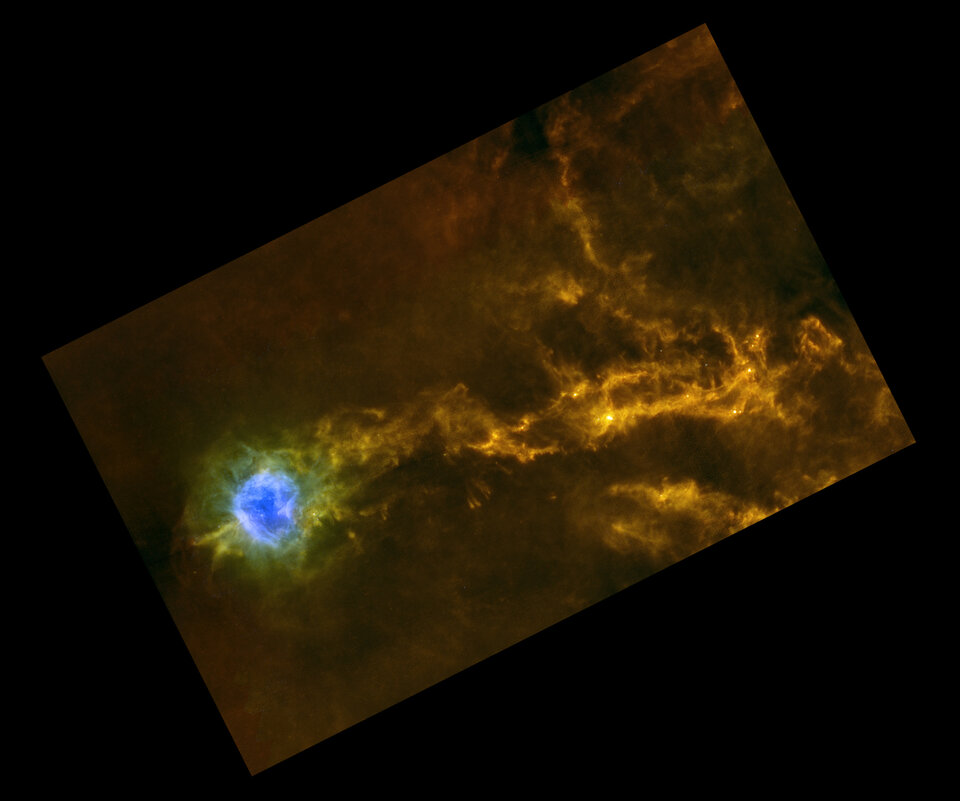
Dechberoucí fotografie jemných sítí prachu a plynu v celé naší Mléčné dráze, které pořídily přístroje observatoře Herschel, nám poskytly úplně nový pohled na vznik hvězd. Tato unikátní pozorování ve vzdáleném infračerveném spektru dala astronomům možnost nahlédnout do toho, jak turbulence proměňují plyn v mezihvězdné médium, které se následně transformuje do síťové struktury v chladných molekulárních oblacích.
Pokud jsou vhodné podmínky, gravitace pak začne vítězit a trhá fragmenty této výplně, z nichž následně formuje kompaktní jádra. V nich najdeme protohvězdy, zárodky nových hvězd, které jemně ohřívají prach ve svém okolí jen několik stupňů nad absolutní nulu. Tím se následně prozrazovaly citlivým přístrojovým očím observatoře Herschel.
Following the water trail
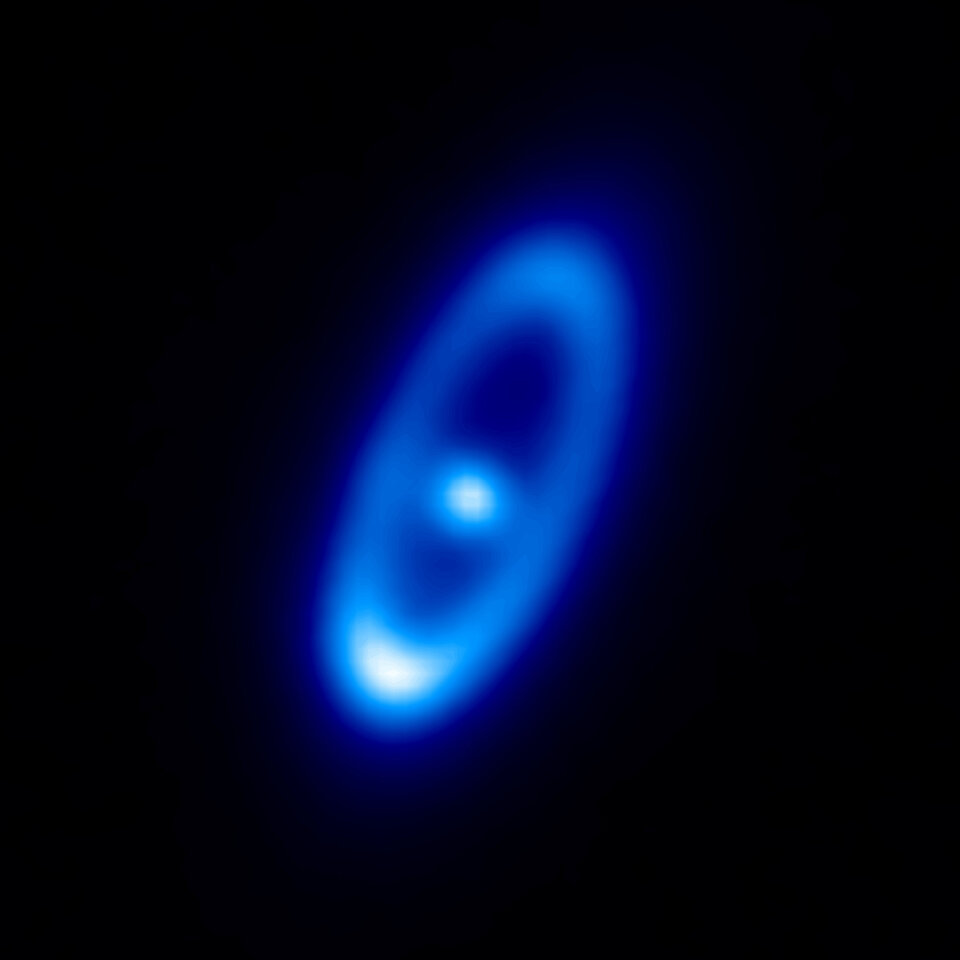
Over the first few million years in the life of newborn stars, the formation of planets can be followed in the dense discs of gas and dust swirling around them. In particular, Herschel has been following the trail of water, a molecule crucial to life as we know it, from star-formation clouds to stars to planet-forming discs.
Herschel has detected thousands of Earth ocean’s worth of water vapour in these discs, with even greater quantities of ice locked up on the surface of dust grains and in comets.
Closer to home, Herschel has also studied the composition of the water-ice in Comet Hartley-2, finding it to have almost exactly the same isotopic ratios as the water in our oceans.
These findings fuel the debate about how much of Earth’s water was delivered via impacting comets. Combined with the observations of massive comet belts around other stars, astronomers hope to understand whether a similar mechanism could be in play in other planetary systems, too.
Galaxies across the Universe

Herschel has also contributed to our knowledge of star formation on the grandest scales, spanning much of cosmic space and time. By studying star formation in distant galaxies, it has identified many that are forming stars at prodigious rates, even in the early years of the Universe’s 13.8 billion-year life.
These intense star-forming galaxies produce hundreds to thousands of solar masses’ worth of stars each year. By comparison, our own Milky Way Galaxy produces the equivalent of only one Sun-like star per year on average.
How galaxies can support star formation on such massive scales during the first few billions of years of the Universe’s existence poses a crucial problem for scientists studying galaxy formation and evolution.
Herschel observations are hinting that when the Universe was young, galaxies had much more gas to feed from, enabling high rates of star formation even in the absence of the collisions between galaxies normally needed to spark these spectacular bouts of star birth.
“Although this is the end of Herschel observing, it is certainly not the end of the mission – there are plenty more discoveries to come,” says Dr Pilbratt.
“We will now spend the next few years making our data accessible in the form of the best possible maps, spectra and various catalogues to support the work of present and future astronomers. Nevertheless, we’re sad to see the end of this phase: thank you, Herschel!”
Notes for Editors
ESA’s Herschel space observatory was launched on 14 May 2009 and, with a primary mirror 3.5 m across, is the largest, most powerful infrared telescope ever flown in space.
Its two camera/imaging spectrometers, PACS (Photoconductor Array Camera and Spectrometer) and SPIRE (Spectral and Photometric Imaging Receiver), together covered wavelengths of 55–670 microns.
A third science instrument, HIFI (Heterodyne Instrument for the Far Infrared), a very high resolution spectrometer, covered two wavelength bands, 157–212 microns and 240–625 microns. All three instruments were cooled to –271ºC inside a cryostat filled with liquid superfluid helium. The mission finally exhausted its coolant today.
Herschel will continue communicating with its ground stations for some time now that the helium is exhausted, during which a range of technical tests will be performed.
Finally, in May, it will be propelled into its long-term stable parking orbit around the Sun.
In addition to the legacy of the scientific data, the mission resulted in a number of technology advances applicable to future ESA missions. Herschel saw the development of advanced cryogenic systems, the construction of the largest mirror ever flown in space, and the most sensitive direct detectors for light in the far-infrared to millimetre range.
Manufacturing techniques have already been applied to the next generation of ESA’s space missions, including Gaia and the James Webb Space Telescope.
For further information, please contact:
Markus Bauer
ESA Science and Robotic Exploration Communication Officer
Tel: +31 71 565 6799
Mob: +31 61 594 3 954
Email: markus.bauer@esa.int
Göran Pilbratt
ESA Herschel Project Scientist
Tel: +31 71 565 3621
Email: gpilbratt@rssd.esa.int


